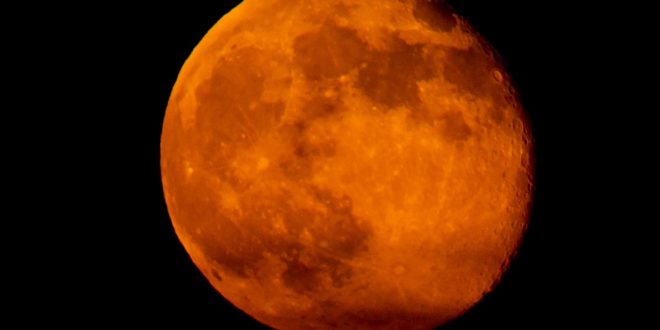This month – November 2016 – you’ll see why the word planet means wanderer. Venus will move away from the setting sun all month long, while Saturn will fall sunward this month. Saturn will fade from the evening sky by the month’s end, while Venus will remain an evening “star” for months to come.
Thursday, offers up a nice conjunction with the moon and brilliant Venus. Look about 20 minutes after sunset, low in the southwest sky.
This conjunction makes for a great photo opportunity, for those with a camera or cellphone.
The next conjunction occurs on Sunday night of with the moon and Mars, making a close approach, low in the south at sunset.
The big event for November has to be the amazing full moon, which will occur on Nov. 13 and 14. This full Beaver Moon is also known as the SUPERMOON!
The moon on this date will be some 221,524 miles from Earth. It has not been that close to Earth, since Jan. 24, 1948!
The full Beaver Supermoon, will rise at 6:04 p.m. on Nov. 14 at 76 degrees azimuth — just to left of east.
This will make for a great photo opportunity, giving you a chance to catch the moon as it hugs the horizon.
A few meteor showers are active in November.
Look on Friday night, midnight till dawn, for the Southern Taurid meteor shower, know for bright fireballs. Look high in the east for the constellation Taurus.
The Northern Taurid meteor shower, peaks on the night of Nov. 11 in the same location, but bright moonlight might interfere with this one.
Finally, the annual Leonid meteor shower will peak before sunrise on the morning of Nov. 17. Look due east, from 3 a.m. until dawn.
The Leonids are so famous, that in 1966, observers in Arizona saw thousands of meteors per minute!
Agencies/Canadajournal
 Canada Journal – News of the World Articles and videos to bring you the biggest Canadian news stories from across the country every day
Canada Journal – News of the World Articles and videos to bring you the biggest Canadian news stories from across the country every day



